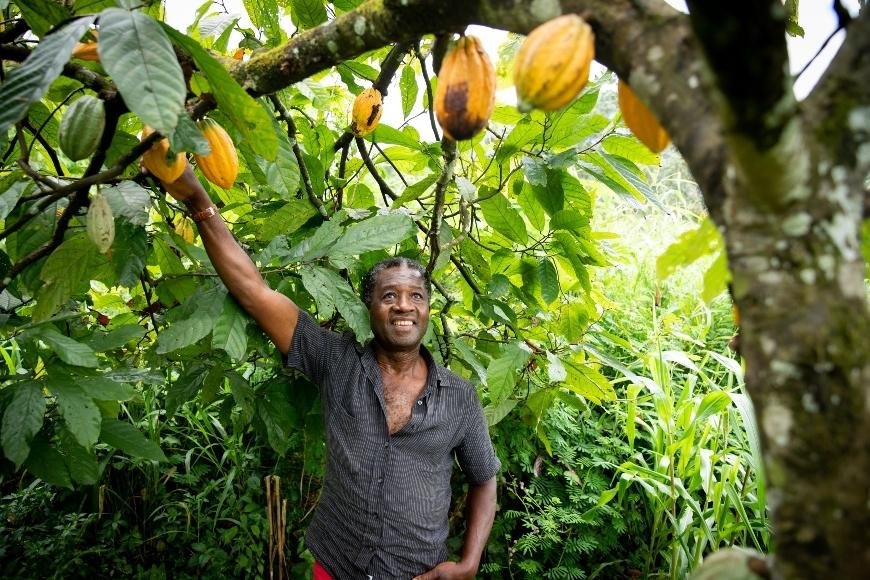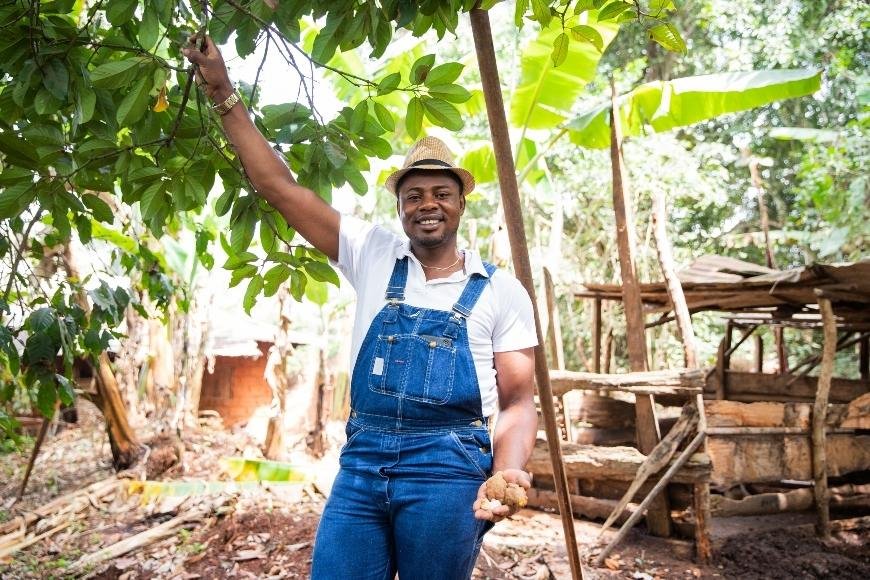How to Grow Kola Nut
Discover the secrets of kola nut cultivation with our step-by-step guide on how to grow Kola Nut, from choosing the right plant to harvesting and storage

Growing kola nuts can be a rewarding endeavor for those interested in cultivating their own natural stimulants. In this blog post, we'll explore the process of how to grow kola nut trees and successfully harvest these potent seeds.
From choosing the right variety of Cola acuminata to understanding proper soil preparation and planting techniques, our comprehensive guide will provide you with all the information needed for successful kola nut cultivation. We'll also discuss essential care tips such as watering, fertilizing, pruning, and training your tree for optimal growth.
Finally, learn about harvesting and storing your precious kola nuts so that you can enjoy their stimulating effects whenever desired. Dive into our detailed guide on how to grow Kola Nut trees and unlock the secrets behind this fascinating plant.
Table of Contents:
- Picking the Perfect Kola Nut Plant
- Preparing the Soil
- Pruning and Training: Essential Techniques for Growing Kola Nut Plants
- Harvesting and Storing Kola Nuts: Tips and Tricks
- Storing Kola Nuts
- Storing Kola Nuts: Keep Them Fresh and Flavorful
- FAQs in Relation to How to Grow Kola Nut?
- Conclusion
1. Picking the Perfect Kola Nut Plant
Get ready to grow your own kola nut plant and enjoy the stimulating effects of these caffeine-rich nuts by selecting a healthy and vigorous specimen to cultivate.
Choose a reputable seed bank or nursery to purchase your kola nut plant from, as they often have detailed information about each variety's characteristics.
- Variety: There are two main species of kola nut plants: Cola nitida and Cola acuminata, so research which one is better suited for your region before making a decision.
- Seedling health: Look for seedlings with bright green leaves free from spots or discoloration and check the roots for any signs of rot.
- Potential age: Aim for seedlings that are around six months old if possible, as younger trees tend to establish themselves more quickly.
Keep in mind that kola nut trees require specific environmental conditions like high humidity levels and temperatures between 68-86°F (20-30°C) throughout the year, so make sure you have the right conditions in place before committing to growing kola nut plants.
Be mindful that due to its psychoactive properties, cultivating kola nuts may not be permissible in certain areas; hence, make sure you research the applicable laws and regulations before embarking on this endeavor.
2. Preparing the Soil

Get your kola nut plants ready to rumble by giving them the perfect soil conditions and nutrients.
Loamy soil with a pH between 6.0 and 7.5 is ideal, so test your soil's pH level with a soil testing kit and adjust it with lime or sulfur if needed.
Enrich your soil with organic matter like compost or aged manure to improve nutrient content and water retention capacity.
- Nitrogen: Encourage lush foliage growth with a nitrogen-rich fertilizer like blood meal or fish emulsion.
- Phosphorus: Promote root development and flowering with bone meal or rock phosphate.
- Potassium: Support overall plant health and water balance with greensand or potassium sulfate.
Keep your kola nut plants hydrated by consistently watering them during their early stages of growth and using a soil moisture meter to determine when it's time to water.
Mulch around the base of your plants with organic materials like wood chips or straw to conserve soil moisture, suppress weeds, and regulate soil temperature.
Remember not to pile mulch too close to the plant stems to avoid rot and pest issues.
By providing optimal growing conditions for your kola nuts, you'll set yourself up for success in cultivating these unique tropical trees.
3. Planting and Watering
Grow kola nut plants with patience and dedication, and reap the rewards.
Choosing the Right Location
Select a sunny spot with temperatures between 60-90°F (15-32°C) for your kola nut tree.
Preparing the Planting Hole
Dig a hole twice as wide and deep as the root ball to give the roots enough space to spread out.
Transplanting Your Kola Nut Plant
Take the plant from its pot, set it in the dug-out area, and fill up with dirt.
Backfilling Soil & Mulching
Mix compost into the soil, tamp it down, and add organic mulch to retain moisture and suppress weeds.
Watering Schedule
Water young kola nut plants every 2-3 days or when the top inch of soil feels dry, and reduce frequency as they mature.
4. Fertilizing
Just like humans, kola nut plants need a balanced diet to thrive, so feeding them with the right nutrients is crucial for their growth and development.
Commercial fertilizers labeled with N-P-K ratios are an ideal source of nitrogen, phosphorus and potassium - the three primary nutrients needed for kola nut plants to thrive.
Nitrogen promotes leafy green growth, phosphorus supports root development and flower formation, and potassium enhances disease resistance and overall strength of stems.
Organic options like compost or well-rotted manure mixed into the soil around each tree at planting time or top dressing during growing season will provide all necessary elements needed by Kolanuts trees without harming the environment or posing any health risks associated with synthetic chemicals used in conventional agriculture practices today.
Applying fertilizer during early spring and mid-summer ensures the necessary nutrients are available when the plant needs them most for growth and fruit production.
Monitoring soil pH levels is also crucial as kola nut trees prefer slightly acidic soil with a pH between 5.5 and 6.5, which allows optimal nutrient uptake by their root systems.
Regularly testing your soil's pH can help you determine if any adjustments need to be made using lime (to raise pH) or sulfur (to lower it).
Proper fertilization plays a significant role in ensuring healthy growth and bountiful harvests from your kola nut plants.
Pruning and Training: Essential Techniques for Growing Kola Nut Plants
Proper pruning and training are crucial for healthy kola nut plants and a bountiful harvest.
Why Pruning is Important
Pruning maintains plant shape, removes dead or damaged branches, encourages new growth, and improves overall health.
When to Prune
Prune during the dormant period, between late winter and early spring, to minimize stress and promote healthy development.
How to Prune
- Selecting Branches: Identify dead, diseased, or crossing branches.
- Making Clean Cuts: Use sharp shears or a saw to make clean cuts without tearing bark.
- Thinning Out Canopy: Remove excess foliage to allow sunlight to reach lower leaves.
Training Techniques
- Staking: Support young trees with stakes to grow straight and tall.
- Trellising: Attach branches to a trellis or support system for limited space.
- Bending Branches: Gently bend flexible branches into desired positions and secure with soft ties or string.
By following these techniques, you'll enjoy fresh, flavorful kola nuts from your very own garden.
Harvesting and Storing Kola Nuts: Tips and Tricks

Get ready to enjoy the fruits of your labor with these simple tips for harvesting and storing kola nuts.
Determining When to Harvest
Harvest kola nuts when they turn bright red with a slightly wrinkled texture.
Picking Techniques
Twist each nut gently until it detaches from the stem to avoid damaging the tree.
Cleaning Kola Nuts
- Rinse harvested kola nuts under running water and pat dry.
- For dried kola nuts, spread them evenly on drying racks for two weeks.
By following these guidelines, you can enjoy the unique taste and properties of your homegrown kola nuts for an extended period.
Storing Kola Nuts: Keep Them Fresh and Flavorful
Congratulations on your kola nut harvest. Here are some tips to store them properly and maintain their freshness.
Start by cleaning the kola nuts and drying them thoroughly to avoid moisture, which can cause spoilage.
Place the kola nuts in a dim area, away from any bright light or heat sources such as a kitchen cabinet.
- Airtight containers: Use glass jars or plastic food storage boxes with tight-fitting lids to protect the nuts from moisture, air exposure, and pests.
- Vacuum sealing: For longer-term storage, vacuum seal the nuts to remove excess air and extend their shelf life.
- Silica gel packets: Add silica gel packets to absorb any residual moisture and keep the nuts fresh.
Regularly check the nuts for spoilage or mold, and discard any that show signs of off-odors, discoloration, or soft spots.
For optimal freshness and flavor, it is recommended to consume kola nuts within a year of storage.
Proper storage is crucial in preserving the freshness and flavor of kola nuts, so follow these guidelines to get the most out of this unique nut.
FAQs in Relation to How to Grow Kola Nut?
How to Grow Kola Nuts?
If you're interested in growing kola nuts, you've come to the right place. Kola nuts are the fruit of the kola tree, which is native to West Africa's rainforests. Here's what you need to know about kola nut cultivation.
Choosing the Right Plant
First, choose the right plant. Kola nut trees, also known as Cola acuminata, are the most common type of kola tree. They grow up to 60 feet tall and require a lot of space to thrive. Make sure you have enough room in your garden before planting.
Preparing the Soil
Next, prepare the soil. Kola nut trees prefer well-draining soil with a pH between 5.0 and 6.5. If your soil is too acidic, add lime to raise the pH. If it's too alkaline, add sulfur to lower the pH. Mix in compost or well-rotted manure to improve soil fertility.
Planting
Plant seeds or seedlings in a sunny location. Kola nut trees require full sun to grow and produce fruit. Water regularly to maintain moisture, but don't overwater as this can lead to root rot. Apply fertilizer for optimal growth. Prune and train your plants as needed to encourage branching.
Harvesting
Harvest mature nuts when they turn brownish-red. Kola nut trees typically take about 5-6 years from planting until they begin producing fruit. Once established, these trees can continue bearing fruits for up to 50 years or more if properly cared for.
Propagation
Kola nut trees are primarily propagated through seeds or vegetative cuttings taken from healthy parent plants. Seeds should be sown soon after harvesting as their viability decreases rapidly over time.
What Plant Does Cola Nut Come From?
The cola (or kola) nut comes from the Cola genus, specifically Cola acuminata and Cola nitida species of evergreen tropical trees native to West Africa's rainforests.
Now that you know how to grow kola nuts, you can try your hand at cultivating these fascinating trees. Happy planting.
Conclusion
Want to grow your own kola nut? Here's how:
- Choose the right plant and prepare the soil carefully.
- Water, fertilize, prune, and train the plant regularly.
- Harvest the kola nuts and store them in a cool, dry place.
By following these steps, you can enjoy the benefits of this potent stimulant without relying on commercial sources.




































































































































